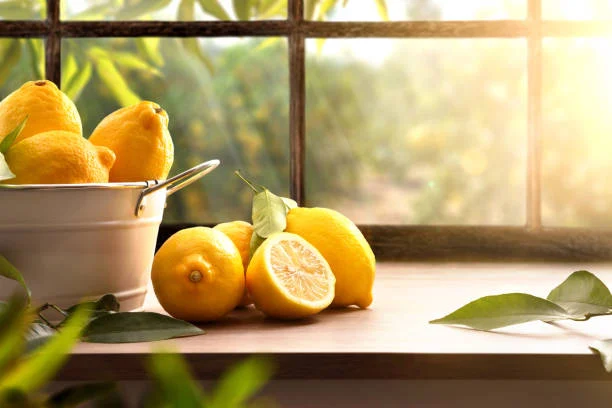Complete Guide to Lemon Farming
🌱 Introduction
Lemon farming is gaining popularity across many parts of the world due to its high demand, year-round market potential, and relatively simple cultivation process. Whether you’re a small-scale farmer or planning a commercial orchard, this guide will walk you through everything you need to know about lemon farming — from planting to harvesting and beyond.

🌍 Why Lemon Farming?
Lemons are packed with vitamin C and widely used in food, beverages, cosmetics, and even cleaning products. The demand stays steady throughout the year, making lemon farming a profitable and sustainable option for farmers. Plus, lemon trees are hardy, adaptable to various climates, and require relatively low maintenance compared to other fruit crops.
🧾 Pre-Requisites for Starting Lemon Farming
✅ Suitable Climate
- Lemons grow best in tropical and subtropical climates.
- Ideal temperature: 25°C to 30°C
- Sensitive to frost but can tolerate drought to some extent.
✅ Soil Requirements
- Well-drained, loamy soil rich in organic matter.
- pH level: 5.5 to 7.0
- Avoid water-logged or highly alkaline soils.
✅ Land Preparation
- Plough the field 2–3 times to remove weeds.
- Add organic manure or compost before planting.
🌱 Choosing the Right Lemon Variety
Some high-yielding and popular lemon varieties include:
- Eureka
- Lisbon
- Meyer Lemon (sweeter, hybrid)
- Assam Lemon (Nemu Tenga)
- Kagzi Kalan (commonly grown in India)
Choose the variety based on your local climate, market demand, and disease resistance.
🌿 Planting Process
🔹 Spacing
- Standard spacing: 4m x 4m or 5m x 5m
- Allows enough sunlight and air circulation.
🔹 Planting Season
- Best time: June to August (monsoon season)
- Dig pits of 60x60x60 cm, fill with topsoil mixed with compost.
🔹 Irrigation
- Regular watering is crucial during the initial years.
- Mature trees need less frequent watering, except during dry spells or fruiting stage.
🛡️ Pest & Disease Management
Common Pests:
- Citrus psylla
- Leaf miner
- Aphids
Diseases:
- Citrus canker
- Gummosis
- Powdery mildew
🧪 Solution:
- Use neem-based sprays or organic pesticides.
- Prune affected branches and maintain cleanliness around the plants.
🌼 Flowering & Fruiting
- Flowering starts around 2–3 years after planting.
- Full fruit-bearing starts after 4–5 years.
- Harvesting happens 2–3 times a year, depending on the variety and climate.
🧺 Harvesting & Post-Harvest
- Lemons are ready for harvest when they turn fully yellow or light green.
- Use pruning scissors or handpick gently.
- Sort and grade fruits based on size and quality.
- Store in cool, dry places for longer shelf life.
💰 Marketing & Profit Potential
- Sell fresh lemons to local markets, wholesale buyers, or juice companies.
- Value-added products like lemon juice, pickles, dry lemon powder, or essential oil can fetch better profits.
- One acre of well-maintained lemon farming can yield up to 10,000–15,000 kg per year, with high ROI.
📦 Tips for Successful Lemon Farming
- Start small and scale up.
- Choose disease-resistant varieties.
- Use organic manure to enhance soil health.
- Network with agricultural departments for subsidies and training.
- Explore export opportunities if quality permits.
🧠 Conclusion
Lemon farming, with proper planning and care, can turn into a highly profitable venture. From its adaptability to its never-ending market demand, lemons are truly the golden fruit of citrus agriculture.
Whether you're aiming for self-sufficiency or commercial profits, the key lies in understanding the crop, nurturing it well, and staying updated with best farming practices.